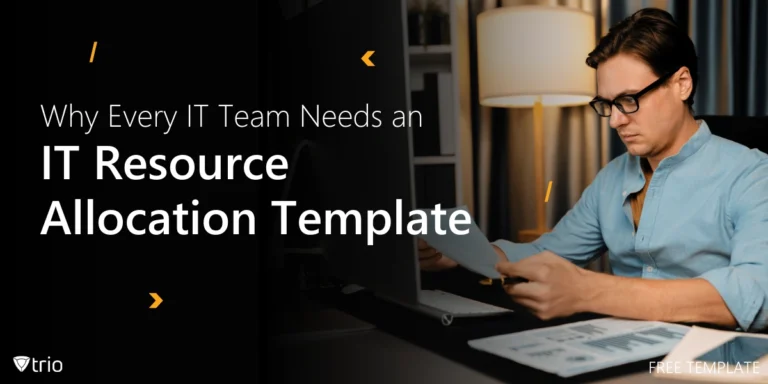In today’s digital age, IT infrastructure forms the backbone of virtually every organization and it is still growing. According to Market Research Future, “The IT infrastructure Services Market is projected to grow from USD 76.85 billion in 2024 to USD 179.67 billion by 2032.” From small businesses to large enterprises, the ability to manage, store, and process data effectively is crucial for operational success. But what exactly is IT infrastructure, and why is it so vital to the modern business landscape? In this blog, we’ll delve into the core concepts, components, and types of IT infrastructure, providing a comprehensive understanding of this essential field.
What Is IT Infrastructure?
At its core, information technology infrastructure refers to the collection of physical and virtual resources that support the management, storage, processing, and communication of data within an organization. This includes hardware, software, networks, data centers, and any other equipment or facilities that enable IT services to be delivered. Essentially, the infrastructure of information technology is the foundation upon which all IT operations are built, and it is crucial for the day-to-day functionality of businesses.
Tech infrastructure, in general, refers to the basic physical and organizational structures and facilities needed for the operation of a society or enterprise. In the IT industry, this term is specifically applied to the technology environment—comprising everything from servers and storage devices to operating systems and networking equipment—that supports the organization’s information technology needs. Effective IT infrastructure software ensures that businesses can run smoothly, efficiently, and securely, making it a critical investment for any organization.
The core concept of IT infrastructure revolves around the seamless integration and operation of various technological components to support the organization’s needs. At its heart, IT infrastructure is about ensuring that the systems, applications, and networks are available, reliable, and scalable to meet business demands. This requires careful planning, deployment, and ongoing management of both physical and virtual resources.
A well-designed IT system infrastructure provides the foundation for all IT services and applications, enabling organizations to deliver products and services to their customers effectively. It involves not just the physical components like servers and storage but also the software and protocols that govern data flow, security measures to protect against cyber threats, and cloud services that offer scalability and flexibility. The ultimate goal of IT infrastructure is to align with business objectives, ensuring that the technology supports and enhances overall productivity and growth.
What Are the Three Main Components of IT Infrastructure?
IT infrastructure technologies are typically divided into three main components: hardware, software, and networking. These elements work together to create a cohesive infrastructure service management system that supports the organization’s IT needs.
Hardware
This includes all the physical components such as servers, storage devices, routers, switches, and data centers. Hardware is the tangible part of IT infrastructure and serves as the foundation upon which software and networking components operate. Without robust and reliable hardware, other aspects of the IT infrastructure would be ineffective.
Software
Software encompasses the operating systems, applications, and management tools that run on the hardware. This includes everything from enterprise resource planning (ERP) systems to customer relationship management (CRM) software. Software also includes the management and monitoring tools that IT professionals use to maintain and optimize the infrastructure.
Networking
Networking refers to the interconnections between the hardware and software components, enabling communication and data exchange within and outside the organization. This includes local area networks (LANs), wide area networks (WANs), internet connections, firewalls, and other networking equipment. Networking is essential for ensuring that all components of the IT infrastructure work together efficiently and securely.
Together, these three components form the backbone of an organization’s IT infrastructure, ensuring that data can be processed, stored, and transmitted as needed.

What Are the Types of IT Infrastructure?
There are several types of IT infrastructure, each suited to different business needs and environments. The primary types include traditional infrastructure, cloud infrastructure, and hybrid infrastructure.
Traditional Infrastructure
This type of infrastructure involves on-premises hardware and software, where all components are physically located within the organization’s premises. Traditional infrastructure is often used by businesses that require direct control over their IT resources, especially in industries where data security and compliance are critical. While it offers greater control, traditional infrastructure can be expensive to maintain and scale.
Cloud Infrastructure
Cloud infrastructure leverages remote servers hosted on the internet to store, manage, and process data. This type of infrastructure is popular for its scalability, flexibility, and cost-effectiveness. Organizations can quickly scale resources up or down based on demand, without the need for significant upfront investment in physical hardware. Cloud infrastructure also offers the advantage of reduced maintenance costs and increased accessibility, as data and applications can be accessed from anywhere with an internet connection.
Hybrid Infrastructure
Hybrid infrastructure combines elements of both traditional and cloud infrastructure, offering a balanced approach that can be tailored to an organization’s specific needs. This type of infrastructure allows businesses to keep critical applications and sensitive data on-premises while leveraging the cloud for less sensitive or highly scalable workloads. Hybrid infrastructure is ideal for organizations looking to optimize performance, cost, and security by utilizing the best aspects of both traditional and cloud environments.
Each type of IT infrastructure offers unique benefits and challenges, and the choice depends on factors such as the organization’s size, industry, regulatory requirements, and long-term IT strategy. Understanding these types can help organizations better choose between options for IT infrastructure services.
See Trio in Action: Get Your Free Trial Now!
Conclusion
In summary, IT infrastructure is a comprehensive system of hardware, software, and networking resources that together support the management, storage, processing, and transmission of data within an organization. Whether through traditional on-premises setups, cloud-based solutions, or a hybrid approach, IT infrastructure is essential to the functionality and success of any modern business.
If you’re looking to optimize your IT infrastructure, a technology infrastructure example is partnering with Trio MDM, a comprehensive Mobile Device Management solution that can help you manage your devices, secure your data, and streamline your operations. Get started with Trio’s free demo today to elevate your IT infrastructure to the next level.




